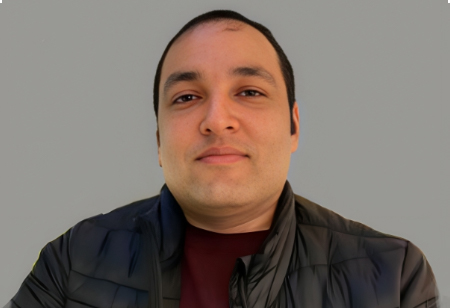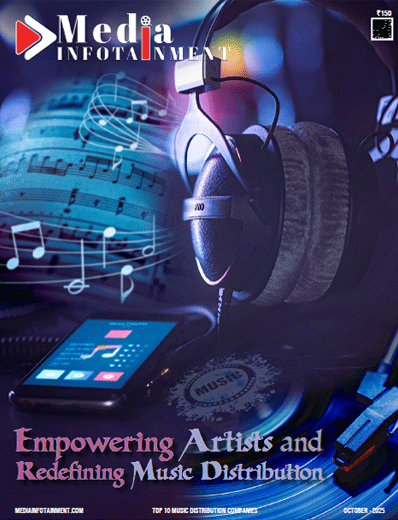Future Trends in Content Production: How Technology is Shaping Film and Television
Nitin Panwar is a leader in digital transformation, AI strategy, and business innovation, reshaping how organizations leverage technology for growth and efficiency. As the author of HUMINTEL: The Synergy of Human and Artificial Intelligence, Nitin explores how AI amplifies human creativity and decision-making. With a career spanning automotive, finance, and technology, he has pioneered AI implementations, sustainable strategies, and digital initiatives. Known for connecting strategy with execution, he has delivered measurable impact across industries. A thought leader in AI ethics and the future of storytelling, Nitin is a sought-after speaker, empowering organizations to embrace intelligent collaboration between humans and machines. He is defining the future of work and technology-driven innovation.
In this section, we feature an exclusive conversation with Nitin Panwar, who shares his innovative perspective on the future trends in content production, focusing on how technology is transforming the film and television industry for the innovations. Here’s the excerpts
What role do emerging technologies like artificial intelligence and machine learning play in streamlining the pre-production and post-production processes in the film and television industry?
Honestly, AI and machine learning are completely changing the game in film and television. We’re not just talking about minor improvements here, these technologies are revolutionizing the entire creative process, making everything faster, smarter, and way more seamless. And the best part? They’re not taking away creativity; they’re actually giving filmmakers more room to focus on storytelling.
Take pre-production, for example. AI can now analyze scripts, predict audience engagement, and even suggest tweaks to make a story more compelling. Studios are already using these tools to estimate box office potential before a single frame is shot. And casting? That’s getting a major AI boost too. Instead of spending weeks going through thousands of auditions, AI-powered tools can analyze facial expressions, voice tone, and past performances to match actors to roles in seconds. Imagine having an AI assistant that instantly recommends the perfect lead based on emotional depth and acting history, it’s incredible.
And then there’s post-production, where AI is making an even bigger impact. Editing, which used to take weeks, can now be streamlined in days. AI can automatically cut scenes based on the director’s style, enhance color grading, and even restore old footage to ultra-high definition. In VFX, it’s completely transforming motion capture and rendering, making it possible to create hyper-realistic characters with far less effort and computing power.
But here’s the key thing, AI isn’t replacing filmmakers, it’s empowering them. Directors and producers now have tools that eliminate technical roadblocks, giving them the freedom to push creative boundaries like never before. It’s like having a supercharged assistant handling the heavy lifting so the creative team can focus on what really matters, crafting unforgettable stories.
At the end of the day, AI and ML aren’t just fancy tools. They’re catalysts, helping filmmakers bring their visions to life faster, smarter, and with even more artistic freedom.
How are advancements in virtual production and real-time rendering tools, such as Unreal Engine, transforming the way filmmakers approach set design and visual effects?
Advancements in virtual production and real-time rendering tools, especially Unreal Engine, are completely changing how filmmakers create and visualize their stories. Instead of relying on traditional green screens and waiting weeks for visual effects to be added in post-production, filmmakers can now shoot scenes in LED volume stages where entire environments are rendered in real time. This means directors and cinematographers can see the final look of a scene as they shoot it, making instant adjustments to lighting, camera angles, and backgrounds, something that was never possible before.
One of the biggest advantages of this technology is flexibility. Filmmakers no longer need to travel to multiple locations or build expensive sets, entire worlds can be created digitally inside a studio. And because Unreal Engine renders everything in real time, changes can be made on the spot, cutting down on production delays and giving creators more room to experiment.
What’s really exciting is how this technology blurs the line between gaming and filmmaking. With real-time engines like Unreal, directors can interact with digital environments as if they were physical sets, moving objects, changing weather conditions, or even reshaping entire landscapes with just a few clicks. It’s not just about efficiency; it’s about opening up new creative possibilities.
Another interesting fact is accessibility. In the past, high-quality visual effects were limited to big-budget studios. Now, indie filmmakers can achieve Hollywood-level production value at a fraction of the cost, making ambitious storytelling possible for more creators than ever before.
Virtual production isn’t just an upgrade, it’s a complete shift in how films are made. And the best part- that is only scratching the surface of what’s possible.
With the rise of immersive formats like virtual reality (VR) and augmented reality (AR), how is audience engagement expected to evolve, and what challenges does this pose for content creators?
Immersive formats like virtual reality (VR) and augmented reality (AR) are completely changing the way audiences engage with content. We’re moving beyond just watching a story to actually stepping inside it. VR lets people experience entire worlds firsthand, making storytelling more personal and emotionally powerful. AR, on the other hand, blends digital content with the real world, turning everyday spaces into interactive experiences, whether it’s a live concert with digital effects or a museum exhibit that comes to life through your phone.
What excites me the most is how this shifts storytelling from a fixed experience to something dynamic and personalized. Instead of everyone watching the same scene from the same perspective, VR and AR allow people to control what they see and how they interact with the story. Imagine watching a mystery where you decide which character to follow or experiencing history as if you were standing right in the middle of it. It’s a level of immersion we’ve never had before.
But with all these new possibilities come big challenges. One of the biggest hurdles is storytelling itself. In traditional films, the director controls what the audience sees, but in VR, viewers can look anywhere. How do you guide their attention without breaking immersion? That requires a completely different way of thinking about story structure and direction.
Then there’s the technology side. High-quality VR and AR content needs advanced tools, expertise, and a bigger budget. And while headsets are getting better and cheaper, we’re still not at the point where they’re a household staple. The real challenge is making immersive content easy to access and use for a mainstream audience.
Even with these challenges, I think we’re just at the beginning of something huge. As the technology improves and creators push the limits, we’re going to see storytelling evolve in ways we never imagined, blurring the lines between reality and fiction, and making stories more interactive, emotional, and unforgettable.
What impact do cloud-based collaboration tools and remote workflows have on the traditional production pipeline, especially in fostering global creative partnerships?
Interesting question, Cloud-based collaboration tools and remote workflows have completely changed the way films and TV shows are made, especially when it comes to working with creative teams across the world. It’s incredible to see how these technologies are breaking down geographical barriers. Now, a director in Los Angeles can work with an editor in London and a VFX team in Mumbai, all in real time. This wasn’t possible before, but today, tools like Frame.io, Adobe’s cloud suite, and AWS-powered rendering make instant file sharing, live feedback, and real-time co-editing seamless.
One of the biggest advantages of this shift is speed. In the past, teams had to deal with the hassle of physically transferring files, waiting for approvals, and coordinating across time zones. Now, with cloud platforms, multiple people can work on the same project at the same time, making the entire process faster and more efficient. And it’s not just the big studios benefiting from this, smaller filmmakers and indie creators can now collaborate with top talent worldwide without the need for expensive in-person setups.
Also without its challenges the Internet speed and data security are big concerns, especially when working with high-resolution video files. Studios also have to be extra cautious about leaks and unauthorized access. And while virtual collaboration is great, there’s something special about being in the same room for creative brainstorming or working on sets together, it’s an energy that’s hard to replicate online.
Moreover, the future of production will be a mix of both, leveraging cloud tools for efficiency while still coming together for key creative moments. This new way of working is making the industry more agile, inclusive, and globally connected, opening up incredible opportunities for storytelling without borders.
How are trends in personalized content delivery, driven by data analytics and AI algorithms, influencing the storytelling strategies employed by film and television producers?
Honestly, AI and data analytics have completely changed the game when it comes to storytelling in film and TV. We’re no longer just making content and hoping people will like it, platforms like Netflix, Disney+, and YouTube are using AI to actually shape what gets made in the first place. They’re analyzing everything, what we watch, how long we watch, when we hit pause, what genres we binge, all of it. And that data is influencing which stories get greenlit and how they’re told.
One of the most interesting shifts is how storytelling is becoming more tailored to audience preferences. Studios now have access to detailed insights, what types of characters people connect with, which storylines hold attention, even which emotions keep viewers engaged. It’s like having a direct line to what the audience wants, and that’s shaping decisions in ways we’ve never seen before.
But what really excites me is the rise of interactive storytelling. We saw this with Black Mirror: Bandersnatch, where viewers could make choices that shaped the story. That’s just the beginning. Imagine a future where AI customizes a movie based on your preferences, maybe tweaking the pacing, adjusting character arcs, or even offering different endings based on what you usually enjoy. It’s storytelling, but personalized in real time.
If lean too much on data, we risk losing creativity, turning stories into formulas rather than art. The best filmmakers use AI as a tool, not a crutch. Data can tell us what works, but the magic of storytelling comes from emotion, from risk-taking, from the unexpected.
So, in an opinion, AI and data are making storytelling smarter and more audience-focused, but great stories still come from human instinct and creativity. No algorithm can fully replace that, at least, not yet!
🍪 Do you like Cookies?
We use cookies to ensure you get the best experience on our website. Read more...






